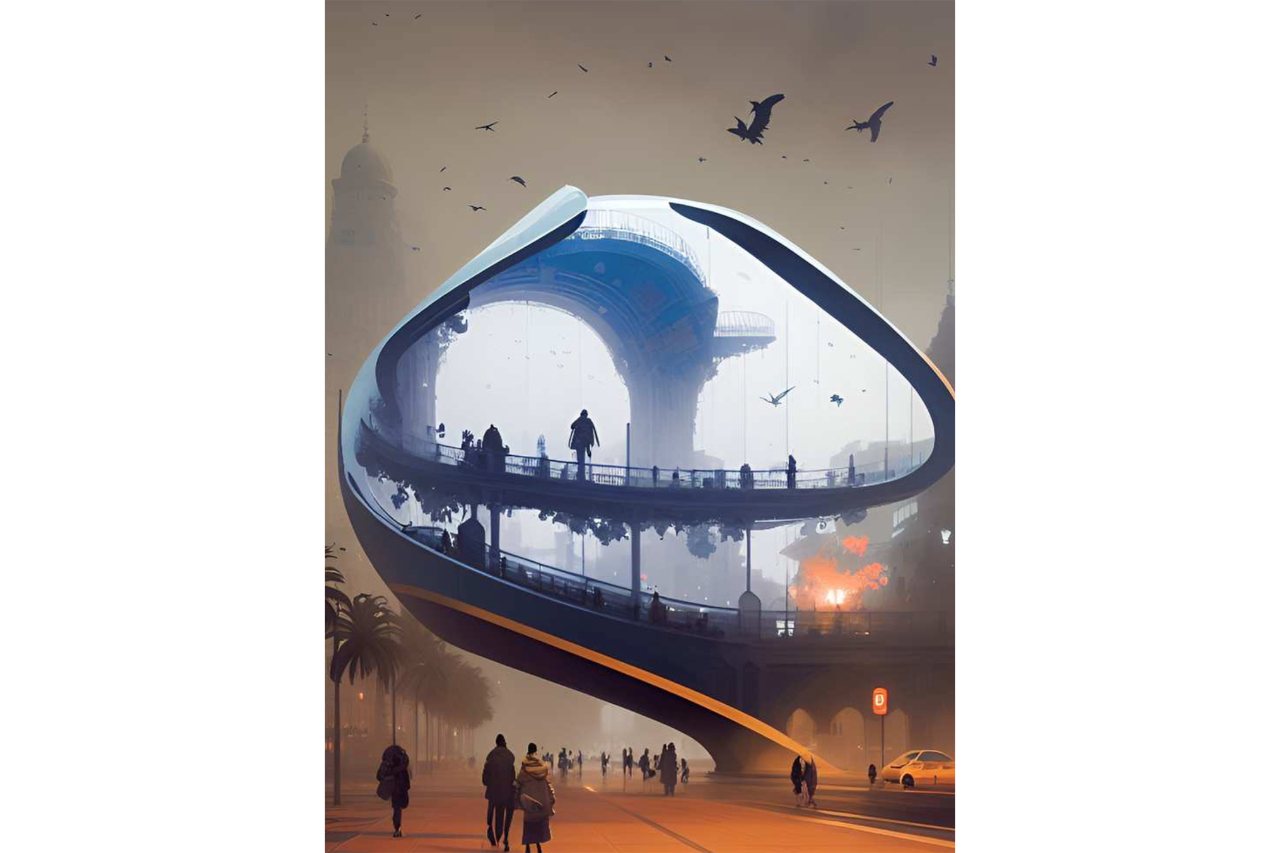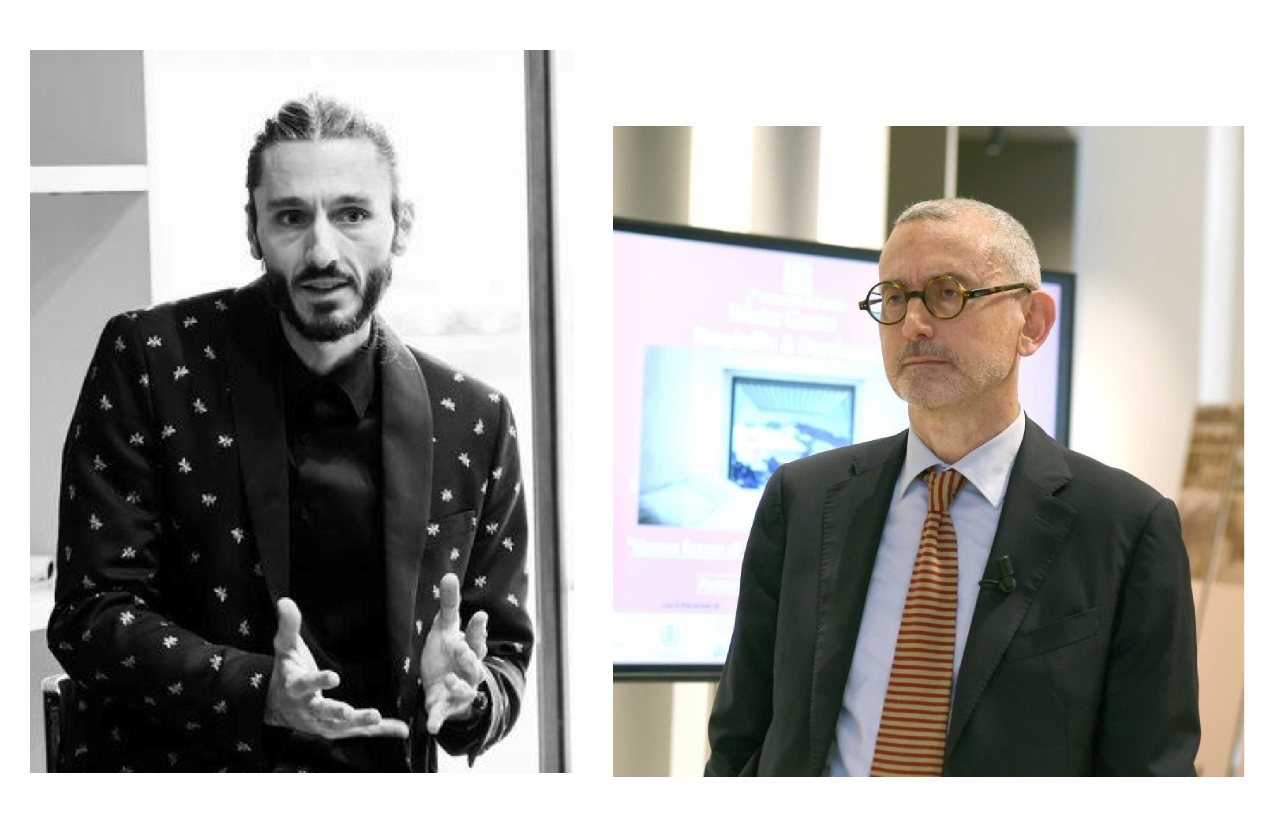


Mottolino Headquarters_Digital Cave_By Progetto CMR

How is the home changing? What does iconicity mean? When can an object be defined as iconic? And further, how long can we continue to use materials massively? In a hopefully near future, will it be possible to cultivate materials to the point of envisioning a Garden 8.0?
Milano Home embarked on a journey into the world of interior design, an inherently evolving discipline, to capture its various facets, analyze the trends it is channeling, and investigate the increasingly close relationship between environmental and economic sustainability. This was done through conversations with two leading figures from the Polytechnic University of Milan: Professor Francesco Scullica, architect, PhD in furniture and interior architecture, Full Professor of Industrial Design at the Department of Design of the Polytechnic, Scientific Director of the Master in Interior Design, and POLI.design representative for Interior Design training programs nationally and internationally; and Fabio Daglio, architect, Interior and Exhibit Designer, Londonart Show-room Manager, POLI.design consultant on Retail Design, Exhibit Design, and new materials and finishes for Interior Design.
The Polytechnic University of Milan is among the most renowned technology centers internationally, among the top 100 universities worldwide for academic and corporate reputation, for the first time in the top 8% of global excellence universities, and ranked 7th in Design and Architecture (QS University Ranking, 2024).
We can no longer produce and use the usual materials
The theme of re-proposing objects in a contemporary key and that of "second-hand" were two of the aspects highlighted by the professors.
"In architecture, there are protocols to respect; in design, there are others. The middle ground, interior design, is more complex because craftsmanship plays a primary role, and respecting sustainability parameters in their entirety, i.e., using only certified materials, is not simple," says Scullica.
"In a sustainable building used as a hotel in Romagna, we are trying to create some rooms by reducing the impact of processing. One of the most effective strategies is second-hand, i.e., using existing objects that may come from collections or have been used for exhibitions and then set aside."
"We don't stimulate the production of objects specifically created for a well-defined space, but we try to adapt existing objects to that context. Another viable path is to use materials that don't wear out easily, that are more resistant and versatile. In this case, sustainability is identified in durability and function, not in materiality," adds Daglio.
"In the future, we won't have materials available to produce continuously. Twenty years ago in Milan, vintage was niche, alternative; now it's fashionable. From clothing to home furnishings, embracing this logic means being able to access quality objects by paying much less, provided they are not masterpieces or cult and modern art objects that fall outside this scenario," continues Scullica.
"Disposing of old objects also means giving new life to artisans. It's not always necessary to change everything; there are many objects and products that can be repaired and restored. This develops a kind of Artisan 4.0, who creates new finishes and transforms the object."
Material Garden: is it just a Utopia?
Could we grow materials? It might seem daring, but it's not.
"What's more sustainable than something that is grown and can reproduce? Having biodegradable and replicable elements would be the ideal solution. Resources like materials and oil are destined to run out. Producing materials, having a Garden 8.0, would lead to new scenarios, allowing us to have many elements available, eliminating the recycling phase and, not least, using ever-new materials," emphasizes Scullica.
"The designer plays a leading role," explains Daglio, "because, together with the brand, they can steer customers towards this segment. It's not just an alternative vision but a vision that, in the near future, we will be forced to share."
What emerged at Milano Home?
"I saw many well-made, certified products, made with sustainable processes," says Scullica. "In particular, I noticed a greater presence of quality objects and brands that have recovered some values of the past in light of contemporaneity. Not new for the sake of new, but a dimension that combines innovation and value."
A perspective also noted by Daglio. "I see the rebirth of craftsmanship, of that Italian know-how rediscovered in a contemporary version thanks also to a mix of ideas and values between creatives and design studios.
With the aid of new technologies, the ideas elaborated by enlightened designers, and the contribution of institutes and universities, there is a desire to preserve the roots that lie in Italian tradition projected towards the future, to define new realities and new environments."
"In Italian design, craftsmanship has always played an important role," continues Scullica. "Compared to countries with a strong industrial vocation like Germany, France, and England, Italy, which until the 1960s was a 'peasant' country, did not disperse this heritage, safeguarding a series of artisanal techniques that disappeared in those countries as early as the 1800s.
When the great industrialization also occurred here between the 1950s and 1970s, that ancient system of values represented by skilled artisans – such as chair weavers, carpenters, carvers, blacksmiths, tailors – was not lost. Italian design has its point of excellence in artisanal workmanship. Over time, manual skills have been able to count on advanced technologies, giving rise to a mixture of ideas and designs that have resulted in the creation of unique objects."
Craftsmanship is a wealth that must be safeguarded. Is there a risk that young people will find it more seductive and attractive to embrace technology entirely?
"I would say no," replies Daglio. "Compared to a decade ago, the perspective has changed. If before the gaze was projected solely towards the future, today new technologies allow us to combine contemporaneity with the techniques of the past. We see that textures and patterns created with artificial intelligence are perfected and completed thanks to skilled manual skills that draw inspiration from tradition. The fruitful collaboration between ceramists and young designers, for example, has led to the creation of artifacts that reflect contemporary craftsmanship. The computer medium has thus strengthened that link between technological and ancient. We are in the phase where craftsmanship can use this tool to increase creativity and design, and young designers throw themselves headlong into AI, seen as a collaborator with whom to start a synergistic relationship. The dark moment of the possible crisis of craftsmanship has perhaps already happened and is behind us. Now, a new and bright light is spreading."
A thesis endorsed by Scullica, who, at the same time, emphasizes the need to start a "cultural awareness discourse. There are industry associations that promote this recovery and safeguarding of certain techniques so that a fundamental heritage is not lost, as happens for food. The legislation must encourage not to lose these identity elements that are important for design."
"We need to ride the wave; what matters is to have the pulse of the situation without letting the artificial take over."
Objects must stimulate affectionate relationships
Technology has led to the merging and miniaturization, so there are fewer objects in homes. Those chosen must be significant, possess intrinsic value.
"The great designers are those who manage to intuit an unexpected behavior, an aspiration that is not yet there but they feel a desire that could arise," emphasizes Scullica.
"Achille Castiglioni, a great architect who created a research activity on shapes, techniques, and new materials aimed at the realization of an integral design process, argued that objects should stimulate affectionate relationships. In a society where relationships between people are unfortunately difficult, we delegate an emotional function to objects. This is where the desire to always have them with us emerges. In some ways, it is an exasperation of a hyper-materialistic approach to the daily dimension, because replacing affectionate relationships with objects is an extreme."
The professor also highlights a change related to production.
"In the past, quality objects were born for a cultured middle class but were not necessarily luxury objects. Today, market demands and globalization identify Italian brands as creators of excellence and quality, and all high-end markets look to Italian style. This hides a danger, because sometimes we lose sight of some of the fundamental principles of Italian design, which was very democratic and accessible. In the 1950s-60s, it largely aimed to solve the problems of mass society; in this perspective, the Lambretta, the Vespa, and many home objects were born. Today, the objects are beautiful, interesting, but largely of a medium-high level, if not luxury, even if there are designers, often young, who carry on a more egalitarian idea of design."
Sustainability is not only environmental, it is also economic
The home is changing in relation to new behaviors, to the way people live both alone and when they relate to others, but in "big cities, the economic factor affects the degree of organization of the home. Shrinking surfaces, high real estate values affect purchases. Since the pandemic, the home is also a workplace, I do gymnastics, I avoid going to the cinema and take advantage of home entertainment, show cooking has increased, the sharing of experiences is at its maximum. The home has thus returned to play a central role, and objects represent an essential component for our serenity."
From algae to mushrooms, innovative materials are Increasingly used in the production of objects
Mushrooms, algae, nutshells, coffee grounds, mollusks. Living organisms and food residues are increasingly used not only as coatings but also to produce objects. We can no longer generate and use materials indefinitely; we need to find new solutions to avoid being unprepared.
Architect Daglio provides the state of the art. "Among the most interesting is the sector that originates from mushrooms, which have a very rapid reproduction. Advantageous developments also come from the use of algae, coffee grounds, and mollusks. We started a few years ago by creating films, then objects for the field of coatings. Mushrooms have given rise to products for acoustic coatings (sound-absorbing), and in a few years, we have come to use these materials not only as coatings but also for the production of objects."
"The evolution has been rapid," continues Daglio, "and in this, design has played a driving role. Sustainable, beautiful, and economically competitive objects have won public approval. The proactivity of enlightened designers has driven production, and the trust given to them by brands that have launched this range of products has opened a new frontier. It is a fundamental synergy; if the designer pushes a certain type of article, customers are more willing to welcome this range of objects."
"Research says that in the future we will use black water as drinking water," continues Scullica, "thanks to the use of sophisticated purifiers. It's not science fiction; the problem is acquiring the mentality. We will use clean and sanitized waste water, but it's not an easy concept to grasp."
"Moreover, in China there is a Chinese brand that produces beer from wastewater," concludes Daglio.